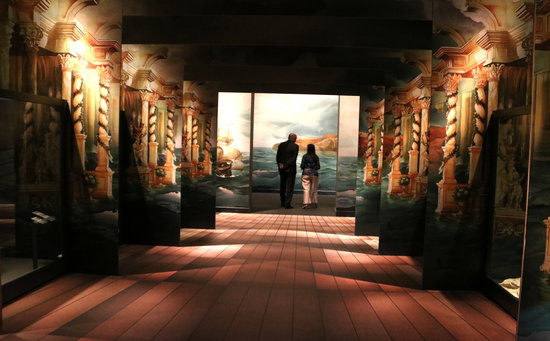CaixaForum explores European history through opera
A new exhibition from London's V&A Museum covers 400 years through eight major works and the cities in which they premiered

From the Venice of Monteverdi to the Leningrad of Shostakovich, via the Vienna of Mozart to the Barcelona of Albéniz. Or, if you prefer, from 'L'incoronazione di Poppea' to ‘Lady Macbeth of the Mtsensk District’, via ‘The Marriage of Figaro’ to ‘Pepita Jiménez’.
Eight operas and the cities in which they premiered is the subject of the exhibition ‘Òpera. Passió, poder i política’ (Opera: Passion, Power and Politics). From the Victoria and Albert Museum (V&A) in London, the exhibition opens on Thursday in Barcelona's CaixaForum.
The exhibition takes the visitor on a journey through nearly 400 years of European history, using almost 300 objects, such as costumes, instruments, scores and other documentation, culminating in the international explosion of opera in the 20th and 21st centuries.
The original exhibition in London, which ran from September 2017 to February 2018, featured seven operas and seven cities, but in Barcelona the exhibition has added a section devoted to the premiere of Isaac Àlbèniz's ‘Pepita Juménez’ in the Liceu in 1896.
“We looked to explain the history of opera, of the cities and Europe, and chose works that take us through 400 years and that make up the majority of musical milestones," says Kate Bailey, conservator at the V&A Museum and curator of this exhibition.
From London to Madrid to Barcelona
After its initial run in London, the exhibition went to CaixaForum in Madrid last spring before arriving now in Barcelona. A Victoria and Albert Museum project, the exhibition was created in collaboration with the Royal Opera House, and was produced by “la Caixa”.
The idea of the exhibition is to highlight the relationship of the cities with the operas that opened in them. For example, Mozart's famous 'Marriage of Figaro' works as a "mirror" of Viennese society at the time, according to the curator.
In all, some 30 institutions contributed to the project, and in Barcelona the section devoted to Albéniz 's opera ‘Pepita Jiménez’ involved the Liceu opera house, where it debuted in 1896, as well as Catalonia's national art gallery, MNAC, among others.
Among the objects on display is the original score of ‘Pepita Jiménez’ and the piano Albèniz used to compose it, Salvador Dalí's costume designs for Peter Brook's ‘Salomé’ (1949), and the marriage certificate of Mozart amb Constanze Weber, lent by the British Library.